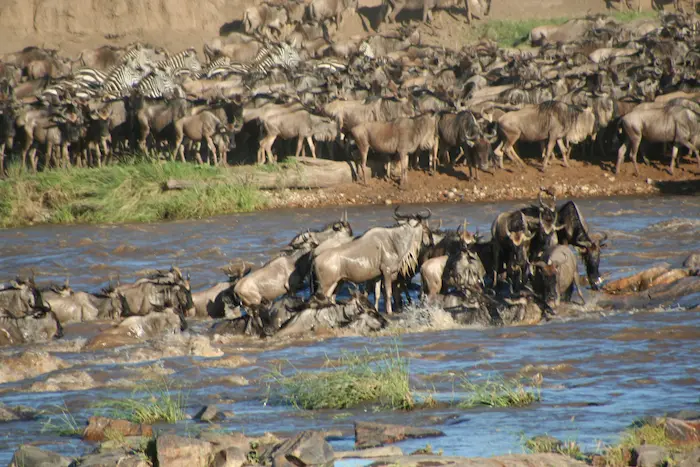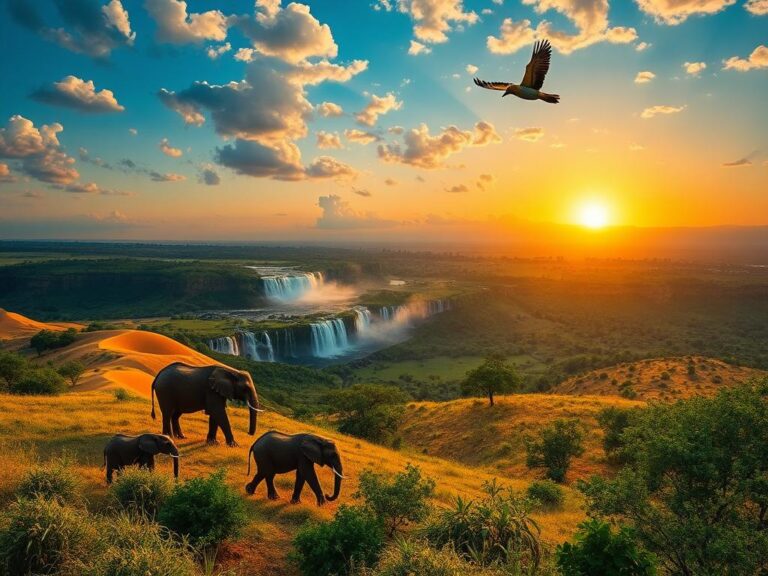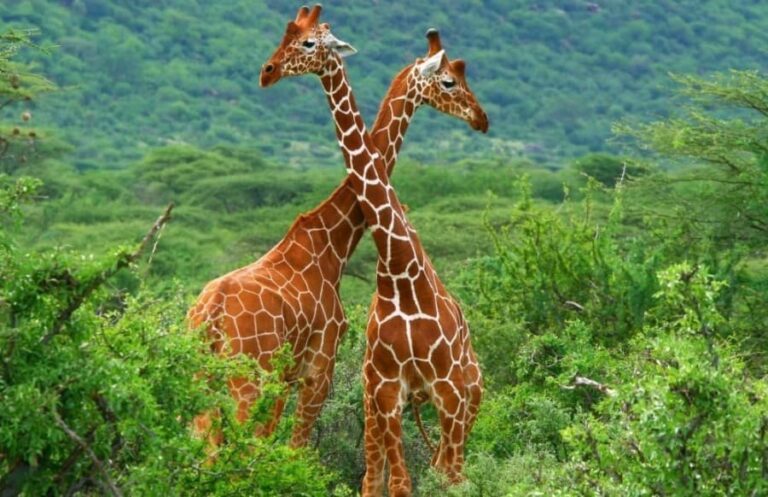
Exploring the Best Areas for Safari in Africa: A Wildlife Enthusiast’s Guide
Best area for safari in Africa is a phrase that resonates deeply with adventure seekers and nature lovers alike.
Africa is a continent brimming with life, culture, and landscapes that evoke awe and wonder.
With thousands of national parks and reserves, choosing the perfect location can be overwhelming.
In this guide, we will explore some of the best areas for safari in Africa, each offering unique wildlife experiences and stunning views.
From the sprawling savannahs of the Serengeti to the dense forests of Bwindi, we’ll provide insights that cater to every traveler’s interests and style.
Get ready to dive into Africa’s lush wilderness and discover your next great adventure!
Serengeti National Park, Tanzania: The Iconic Migration Hub
The Serengeti National Park is perhaps the best-known area for safari in Africa, famous for its incredible wildlife migration.
Every year, millions of wildebeest and zebras traverse the plains, following their age-old paths in search of greener pastures.
This breathtaking spectacle creates one of the most electrifying natural events on the planet.
Visitors to the Serengeti are not only treated to this incredible migration but also have opportunities to witness predators in their natural habitats, including lions, leopards, and cheetahs.
The park spans over 5,700 square miles, offering diverse ecosystems that switch from grasslands to riverine forests, each full of wildlife waiting to be observed.
Some prime locations in the Serengeti include the Seronera Valley and the Grumeti River, where wildlife congregates in abundance during migration season.
The park encourages an array of activities, from game drives to hot air balloon rides, allowing visitors to see the landscape from unique perspectives.
If you’re an avid photographer, the golden hour light over the Savannah is simply magnificent, making it a perfect backdrop for capturing stunning wildlife shots.
Maasai Mara National Reserve, Kenya: The Jewel of Africa
The Maasai Mara is famed for its breathtaking landscapes and rich biodiversity.
As part of the Serengeti ecosystem, the reserve plays host to the Great Migration, where wildebeest and zebras cross over from Tanzania into Kenya.
However, the Maasai Mara is not just about the migration; it is also home to a high concentration of big cats, including lions and cheetahs, making it a premier destination for wildlife enthusiasts.
Visitors can enjoy classic open savannah landscapes filled with wildlife, providing an unmatched experience for photographers and nature lovers alike.
Alongside its impressive wildlife, the Maasai Mara’s cultural richness is another reason to visit.
The indigenous Maasai people, known for their vibrant culture and unique customs, often showcase their traditions to visitors, enriching the safari experience.
Whether you opt for a guided safari tour or a self-drive adventure, the Maasai Mara is a treasure to behold.
Kruger National Park, South Africa: The Big Five Experience
Kruger National Park is one of the largest game reserves in Africa, spanning over 7,500 square miles.
It is home to an impressive variety of wildlife, including the infamous “Big Five”: lion, leopard, rhinoceros, elephant, and Cape buffalo.
This park is renowned for allowing both self-drive and guided safaris, making it accessible to all types of adventurers.
With an extensive road network, Kruger is perfect for those wishing to explore at their own pace.
The park is also well-managed, boasting numerous accommodations and amenities, enhancing your overall safari experience.
The wildlife sightings in Kruger are nothing short of astonishing.
Whether it’s a pride of lions lounging in the shade or elephants frolicking in the mud, every visit promises thrilling encounters.
Take time to explore the diverse ecosystems within the park, from lush riverbeds to arid bushland, each hosting unique flora and fauna.
Etosha National Park, Namibia: The Salt Pan Wonderland
Known for its impressive salt pan that dominates the landscape, Etosha National Park is a must-visit for wildlife lovers.
The park is a sanctuary for a variety of wildlife, including elephants, lions, giraffes, and endangered black rhinoceros.
Visitors can get an up-close view of the animals congregating at the waterholes, especially during the dry season when water is sparse, and feeding frenzies ensue.
The shimmering salt pans create an otherworldly backdrop, making for striking photographs.
Etosha is primarily accessible by road, with several camps located throughout the park.
This means visitors can choose to self-drive or join guided tours to explore different areas.
Alongside its unique landscapes, the park emphasizes wildlife conservation efforts, making it an educational experience for visitors interested in sustainable tourism.
Chobe National Park, Botswana: Home to Africa’s Giants
Chobe National Park is known for its astonishing number of elephants, making it a prime destination for elephant lovers.
The park is located in northern Botswana and is characterized by diverse ecosystems, from floodplains to woodlands.
This variety allows for unique safari experiences, from game drives on land to boat safaris on the Chobe River.
Visitors often spot hippos, crocodiles, and a plethora of bird species while searching for land-based wildlife.
The Chobe Riverfront is particularly popular during the dry season when animals flock to the river to drink.
As the sun sets behind the horizon, enjoy the tranquil atmosphere while watching wildlife from the water.
The stunning scenery combined with abundant wildlife creates unforgettable moments that should not be missed.
Okavango Delta, Botswana: A Unique Safari Destination
The Okavango Delta is one of the world’s largest inland deltas and a UNESCO World Heritage site.
This extraordinary ecosystem is renowned for its biodiversity, with a vast array of wildlife, including elephants, buffaloes, and various species of antelope.
Exploring the delta via traditional mokoro canoe safaris allows you to glide through lush waterways while observing wildlife up close and connecting with nature on a more intimate level.
Guided walking safaris add an extra layer of excitement, allowing you to discover the delta’s hidden gems while following expert guides.
The Okavango Delta boasts unique landscapes, showcasing lagoons, channels, and islands that teem with life.
The variety of habitats supports a wide range of bird species, making it a birdwatchers’ paradise.
If you’re searching for an immersive and tranquil safari experience, the Okavango Delta is a destination you’ll cherish.
Zambezi National Park, Zambia: A Hidden Gem
Located near the breathtaking Victoria Falls, Zambezi National Park offers a more intimate and off-the-beaten-path safari experience.
The park is particularly famous for its walking safaris, allowing visitors to truly connect with the beauty of the African bush.
Walking alongside knowledgeable guides, you will learn to identify animal tracks and understand the diverse ecosystems.
This hands-on experience often leads to encounters with wildlife like lions, leopards, and buffalo, providing memorable adventures.
The stunning landscapes also showcase the mighty Zambezi River, offering scenic views and opportunities for fishing or canoeing.
The combination of wildlife, stunning vistas, and unique experiences makes Zambezi a hidden gem for adventurous travelers.
Addo Elephant National Park, South Africa: The Elephant Paradise
Addo Elephant National Park is renowned for its over 600 elephants as well as an array of other wildlife species.
It is the third-largest national park in South Africa and provides a varied landscape, from dense forests to open grasslands.
In addition to elephants, visitors may also observe lions, hyenas, and a plethora of bird species.
The park has developed robust conservation programs focused on protecting the elephants and their habitat.
Visitors can embark on guided safaris or self-drive tours, taking in the majestic scenery and observing wildlife at their leisure.
The park is also committed to sustainable tourism practices, making it an excellent choice for eco-conscious travelers.
Spending time in Addo offers the chance to learn more about the elephants and their intricate social structures.
Bwindi Impenetrable National Park, Uganda: The Gorilla Experience
Bwindi Impenetrable National Park is famous for its population of mountain gorillas.
This UNESCO World Heritage site provides a unique safari experience, as trekking through dense rainforest to encounter these gentle giants is truly a once-in-a-lifetime opportunity.
The park is home to over half the world’s remaining mountain gorilla population, making it a critical conservation area.
Trekking usually takes several hours, but the thrill of encountering these majestic creatures in their natural habitat makes it all worthwhile.
The park’s diverse flora and fauna provide a breathtaking backdrop, adding an extraordinary element to your journey.
Trekking experiences may also offer opportunities to encounter rare bird species, butterflies, and unique plant life.
Bwindi is not just about gorillas; it’s also a phenomenal location for eco-tourism, with various programs that support local communities.
Selous Game Reserve, Tanzania: The Off-the-Beaten-Path Adventure
Selous Game Reserve is one of the largest protected wildlife areas in Africa, providing a remote and authentic wilderness experience.
With fewer visitors than other popular parks, Selous offers a chance to disconnect from the crowds and immerse yourself in nature.
This incredible reserve combines stunning landscapes with abundant wildlife, featuring everything from lush wetlands to rugged bushland.
Visitors can participate in a variety of activities, including boat safaris, walking safaris, and game drives to experience the diversity of the landscape.
The reserve is noted for its variety of wildlife, including elephants, wild dogs, and numerous bird species.
For adventure seekers wanting to stray from the typical safari routine, Selous presents a unique opportunity to experience nature in an intimate setting.
Exploring this less-traveled path provides an unforgettable adventure that is sure to leave a lasting impression.
Conclusion
Africa is a treasure trove of diverse wildlife and breathtaking landscapes, making it an exceptional destination for safari lovers.
Whether you opt for the iconic Serengeti, the cultural richness of the Maasai Mara, or the immersive experiences found in places like Bwindi and Selous, each area offers something unique for every traveler.
From the immense biodiversity to stunning settings, Africa’s best areas for safari are a wildlife enthusiast’s dream come true.
Embarking on this journey will not only grant you a deeper understanding of wildlife but also create lasting memories and appreciation for conservation efforts.
FAQs
What is the best time for safaris in Africa?
The best time for safaris varies by region.
Typically, the dry season (May to October) offers excellent wildlife viewing as animals congregate around water sources.
What equipment should I bring for a safari?
Essential items include binoculars, a camera, comfortable clothing, sunscreen, and a hat.
It’s also wise to carry a pair of sturdy shoes for walking safaris.
Is it safe to go on safari?
Yes, safari tours are generally safe when conducted by reputable operators.
Following guide instructions and staying in designated areas further ensures safety during your adventure.
Can you go on safari without a guided tour?
Many parks like Kruger offer self-drive options for adventurous travelers.
However, exploring with a knowledgeable guide is recommended for more immersive experiences.
What is the cost of a safari in Africa?
The cost of a safari varies widely depending on the destination, accommodation, and type of safari experience.
While budget options exist, high-end safaris may offer luxurious lodges and exclusive experiences that can be quite costly.
We invite you to share your thoughts, experiences, or questions in the comments section below!


